#the mythological cycle
Explore tagged Tumblr posts
Text
90% of the time I'm like "the only reason why the medieval Irish material seems bizarre is because it isn't taught as part of the standard humanities curriculum -- Greek Mythology is just as bizarre, you're just USED to it, stop reducing this stuff to Lol That's So Weird", but then I do have to be like. "Anyway the postulated father god of the postulated pre-Christian Irish pantheon, if ever such a thing existed in a uniform way, creates a zombie apocalypse in one text that allows him to become king of Ireland and his wife is a crow (part time) that commits crimes and castrates a Viking warlord (who has a really messy family life btw). He also has a xylophone made out of corpses in another text." and I have to be like. "Okay, so maybe the Irish texts ARE a little bit. Out there. On occasion."
#for what it's worth though there's still a REASON for these things#the scribes weren't putting them in because Lol Funny#but also...yeah.#Zeus could never#irish mythology#the mythological cycle#the dagda#i should clarify: they weren't JUST putting them in because Lol Funny
192 notes
·
View notes
Text
I would also like the add (not AS myth focused but culture focused)
-Caitlín Matthews, Celtic Visions: Omens, Dreams and Spririts of the Otherworld
-Nerys Patterson, Cattle Lords and Clansmen: The Social Structure of Early Ireland
-Bart Jaski, Early Irish Kingship and Secession
-anything Fergus Kelly (for Law Tracts and culture)
-anything Damian McManus (for linguistics)
- J.P. Mallory, The Origins of the Irish
-Berry Cunliffe, The Ancient Celts
- Sharon Paice MacLeod, Celtic Cosmology and the Otherworld: Mythic Orgins, Sovereignty and Liminality
So, You Wanna Study Irish Mythology?
One of the questions I get hit with a lot is “If I’m getting into Irish Mythology, what sources do you recommend?” It’s a sad, sad truth about the field that a lot of really valuable info is kept locked away in books and journals that the lay person wouldn’t know about (and then we wonder why information about the field is so bad.) So, I decided to compile a list of sources that I’ve personally used and found helpful in my time. It’s not a complete bibliography because, frankly, that would take up a TREMENDOUS amount of space and you’d be scrolling forever to find what you wanted, and I don’t AGREE with every single thing they say, and it’s by no means exhaustive (keep in mind: scholars from all over the field use mythological texts to study things as diverse as law, geography, tribal names, material culture, etc. and here I’m mainly focusing on sources that are JUST mythological-focused) but they’re a good starting point to forming your own opinions. The journal articles are, tragically, generally kept confined to academia, but….perhaps….if you were to ask around, someone might be able to provide you with a copy. As a whole, Celticists tend to be quite generous when it comes to sharing articles.
List subject to change, check back as time goes on to see if I’ve added anything. Also, as always, feel free to either drop me an ask or a pm if you’re curious about digging further into a given text/figure. I can’t act as a consultant on a religious question; I’m a very firm atheist with all the spirituality of a dull spoon, except with the existence of ghosts. My interest in the Tuatha Dé is purely scholarly; all that I can say is what I know about these topics from the perspective of the medieval sources, but I can definitely do my best on that one front, and I won’t reject anyone who has a different interest in the Tuatha Dé from contacting me.
This list only deals with the Mythological Cycle, not the other strands of the literary tradition that is generally if not uncontroversially referred to as “Irish Mythology”. For Fenian Cycle traditions, a similar bibliography has been compiled by Dr. Natasha Sumner of Harvard, here.
Editions/Translations of Texts (many of these are available at UCC’s CELT archive or on Irish Sagas Online):
Tochmarc Étaíne, Osborn Bergin and Richard Best
Cath Maige Tuired, Elizabeth Gray (If you can and you’re serious about the field, I highly recommend getting the actual Irish Text Society Edition, which includes a wonderful index of every time a given figure shows up in other sources. An absolute must for a mythographer.)
Lebor Gabála Érenn, J.R.S Macalister, 5 vols. (The entirety of this is available on archive.org. Personally…while the rest of it is obviously important and worthy of study, if you’re interested in just the mythological stuff, I recommend Volume IV, which includes both the Fir Bolg and the Tuatha Dé. Unless you really, really want to read five volumes of medieval Irish pseudohistory, the last volume of which was finished posthumously.) i ii iii iv v
The Metrical Dinshenchas, Edward Gwynn. (5 vols.) (These are difficult, with many scholars outright ignoring them except when absolutely necessary. These are in a later form of Irish, which means that, while some of the contents in them could very well be Pre-Christian in nature, they very much do reflect a later medieval world. Some of them are just as much about contemporary politics as they are about mythology, and many of them also bring in content from the Ulster Cycle and the Fenian Cycle. My personal favorites to look up are Tailtiu, Carn Hui Néit, Duirgen, and Carmun, though there are MANY others.) i ii iii iv v
“The First Battle of Moytura”, John Fraser (Note: It’s a VERY late text, with the question of the Fir Bolg/Tuatha Dé battle and how far the tradition really goes back being one that’s very important to keep in mind. It’s a personal favorite of mine. But it’s very late.)
Baile in Scáil, Kevin Murray (Thurneyson also did an older edition that’s more readily accessible, hence why I linked it here, but Murray is the most recent and up to date.)
“How the Dagda got his magic staff”, Osborn Bergin
Oidheadh Chloinne Tuireann, Richard Duffy (This is an Early Modern Irish text, so it was written down comparatively late. That doesn’t mean that there’s NO mythological content here, it’s a personal favorite of mine, but it means that it very much reflects the cultural context of around….the 15th-17th century or thereabouts. It’s very chaotic, very violent, and the heroic figures are….not….heroic.)
Scél Tuáin Meic Chairill, John Carey
Echtra Nerai, it’s available in a fairly recent translation by John Carey in Celtic Heroic Age (pub. 2003) , listed below, though Kuno Meyer also did an edition/translation for it that I’ve linked to here.
Books:
Proinsias Mac Cana, Celtic Mythology (Personally, I’d recommend this one first - It’s designed for someone who isn’t a specialist and, while a lot of what he’s saying has been disputed back and forth, it’s still a handy primer and will get you into the myths.)
John Koch and John Carey, The Celtic Heroic Age (Once you have an idea of what you’re looking at, I recommend this one, since it’s a sourcebook. A TON of material from across the Celtic world, featuring classical sources, medieval Irish sources, and Welsh, all of it in one place.)
Mark Williams, Ireland’s Immortals (I personally recommend you read this one after you read CHA, giving you a bit of context for what Williams is saying here.)
O’Rahilly, Early Irish History and Mythology (note: A lot of what he says here is no longer considered recent in the field, but his knowledge of his own sources is, frankly, without any other peer. Use with a grain of salt)
John Carey, The Mythological Cycle of Medieval Irish Literature
Kim McCone, Pagan Past, Christian Present
Koch, Celtic Culture: A Historical Encyclopedia
Articles:
John Carey, “Myth and Mythography in ‘Cath Magh Tuired’”
John Carey, “Donn, Amairgen, Ith and the Prehistory of Irish Pseudohistory”
Proinsias Mac Cana, “Aspects of the theme of King and Goddess in Irish Literature”
Máire Herbert, “Goddess and king: the sacred marriage in early Ireland.”
Gregory Toner, “Macha and the invention of myth”
Elizabeth A. Gray, “Cath Maige Tuired: myth and structure“
Thomas Charles-Edwards, “Tochmarc Étaíne: a literal interpretation”
Tómas O’Cathasaigh, “Cath Maige Tuired as Exemplary Myth”
Joseph Nagy, “Close encounters of the traditional kind in medieval Irish literature”
Mark Scowcroft, “Leabhar Gabhála. Part I: the growth of the text”
Mark Scowcroft, “Leabhar Gabhála. Part II: the growth of the tradition”
Joseph Nagy, “‘Talking myth’ in medieval Irish literature.”
John Carey, “The Location of the Otherworld in Irish Tradition”
Máire Bhreathnach, “The sovereignty goddess as goddess of death?“
John Carey, “Notes on the Irish war-goddess.”
Veronica Philipps, “Exile and authority in Lebor gabála Érenn”
Kevin Murray, “Sources of Irish mythology. The significance of the dinnṡenchas”
#gaelpol#celtic studies#irish mythology#celtic mythology#the mythological cycle#gaelic polytheism#celtic reconstructionism#long post#books#resources and recommendations
3K notes
·
View notes
Text
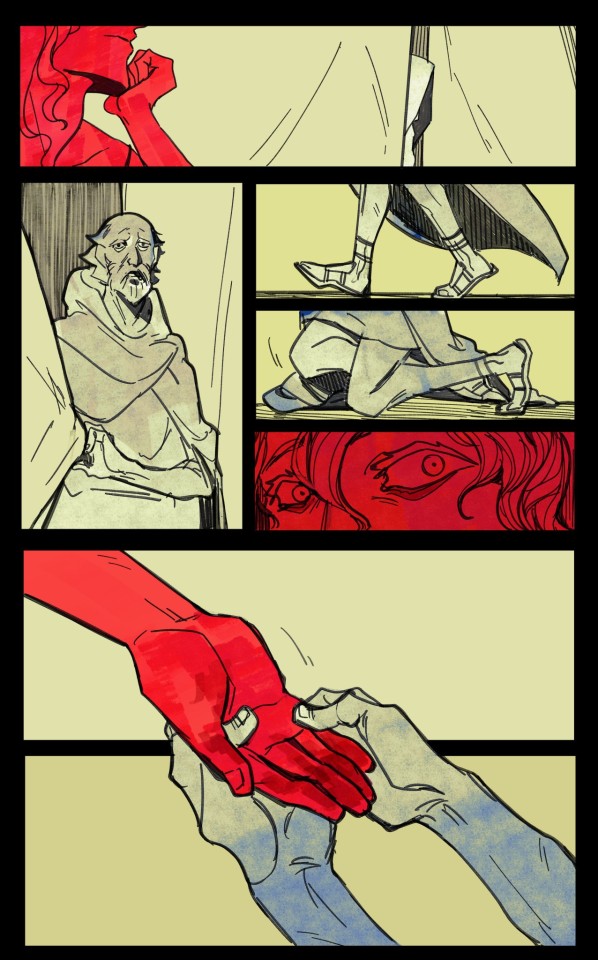
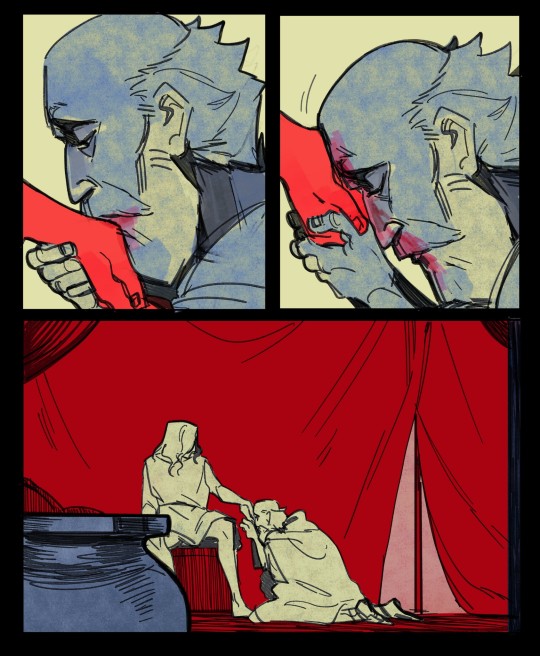
I have endured what no one on earth has ever done before
I put to my lips the hands of the man who killed my son.
(1/2)
#art#digital art#tagamemnon#the iliad#iliad#achilles#priam#greek mythology#epic cycle#also just realized i drew the wrong hand whoops#listen i really wanted to draw the thumb
19K notes
·
View notes
Text
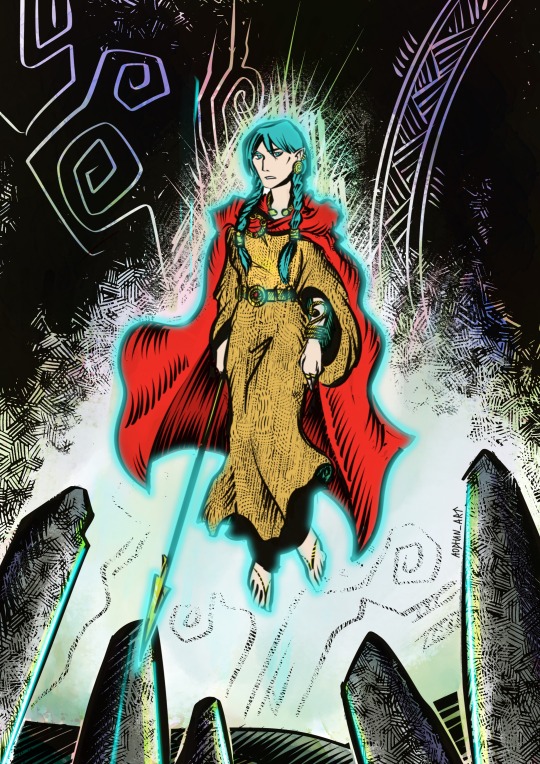
Tír na nÓg / Ulster cycle Hatsune Miku
#my art#hatsune miku#vocaloid hatsune#irish mythology#tuatha de danann#sidhe#fae art#ulster cycle#ireland#celtic#magic#fantasy art#procreate art
2K notes
·
View notes
Text
I think that...you’re not off-base, necessarily, but this is getting into some very, very shaky territory given the nature of the Irish materials we have. I haven’t met any scholar currently in the field who believes there is any hint of a creation story in LGE or the Táin (I have spoken to one who believed that the remscél involving the two bulls was a reflection of the Gundestrup cauldron and had something to do with the constellations, but that was very much much an outlier experience.) These days, I’m lucky to find a scholar who is willing to call the mythological material “mythological.” LGE is overwhelmingly a product of a drive to understand Ireland’s place in the world, starting in about the 9th century with Historia Brittonum and continuing onwards into the 11th/12th centuries (and onwards, given, for example, Geoffrey Keating’s reliance on it). Again, it doesn’t mean that there’s NOTHING mythological in it or the Táin at all, but it means we have to be very careful as far as the context, that I don’t believe any of us are currently looking into them for a creation myth, and there are many, many scholars in the field at the moment who are inclined to disagree with us even on that. (Elizabeth Boyle of Maynooth being one, who is very well respected in the field.) I have gotten into borderline shouting matches with colleagues even in my own department (which didn’t descend *into* shouting matches but some very, very catty comments and death glares) about the validity of applying mythography to myth. This is not to say that I believe that those scholars are incompetent, don’t understand the study of mythology, or are even necessarily WRONG, they are all supremely intelligent and capable in what they do; it’s to say that this is something that is a hotbed in the field and most current scholars will not agree with you on it. As a mythographer currently working in the field, I *have* to be careful with how I discuss these things, because if I go a step too far, people will use it as a way of getting rid of my entire field.
For an example of Indo-European elements in LGE, specifically relating to Donn and Amairgen, where he points out the Indo-European parallels to figures such as Ymir, Castor and Pollux, Romulus and Remus, etc., I recommend John Carey’s article, “Donn, Amairgen, Íth, and the Pre-History of Irish Pseudohistory”, but he does not necessarily even call it a creation story as such, rather a foundation story that might have some roots in the Indo-European creation myth. Something that myself and my colleague and friend @ad-ciu have discussed quite a bit when we’ve discussed the mythology and potential Indo-European connections, and something that Mark Williams brings up, brilliantly, in my opinion, in his book, Ireland’s Immortals, is that...many times, these figures appear to have been regional. Or several regional figures in a trenchcoat. Figures like the Morrígan, the Dagda...potentially did not exist as we know them now. That is to say, as John Carey suggests in that same article, the character of Íth appears as an ancestor to the Erainn people of Ireland, but he possibly (likely?) didn’t have any significance to anyone outside of those groups. The story of Donn and Amairgen, despite everything else...might be an origin story, with pan-Celtic implications (Carey points out some Gaulish cognates), but only for the Gaels. We’re inclined to see “Irish” deities or “Gaelic” deities running around...and they were Irish and they were Gaelic, but they might not have been uniform, and some figures might have fallen together or fallen apart in ways we can’t always account for. (It’s very troubling to look at the Ogham stones, which sometimes do maintain traces of theonyms, and see relatively few recognizable names, very likely regional deities who were either forgotten or merged in with the “big names” that might, in some cases, only reflect who was lucky enough to have some Christian literati living in their region.) All this is to say that caution is vitally important when doing this kind of reconstructive work -- we cannot account for all the variants that likely existed when Ireland was so incredibly regionalized (even moreso than it is now). (Like at least people in Cork and people in Limerick now can agree “fuck Dublin.”) (And at least you HAVE those massive urban centers now instead of túatha of various sizes and ranges of power.)
Do I think that there was an Irish creation myth at all? ...I don’t know, honestly. I don’t think it existed in any single form if it did. But also, at times, I think that we might be chasing after something that...if it did exist, it wasn’t important enough for it to be preserved. The Irish monks were meticulous about staying as true to what they believed the facts were as much as possible, even if those facts jarred with orthodox Christian values (see: The Tuatha Dé as “half fallen angels”, which nearly gave at least one English monk studying the Voyage of St. Brendan a heart attack) -- if they had knowledge of a pagan variation of the creation of the world...I think we’d have stronger evidence for it. We certainly do for the Scandinavian, which was also recorded post-Christianization. Do I think that everyone in pre-Christian Ireland believed the world came from nothing? Not necessarily, but I think that...it might not have been the priority for them that we think it was. Twins might have played a role in it, absolutely. Sometimes, I think that there are too many stories about cities buried beneath the waves across the Celtic literatures for it to be a total coincidence, that there might have been a flood story at some point. It might have involved big name figures like the Dagda, if the Dagda existed in that form. But I think that the Irish view of the creation of the landscape, from what we generally see...it wasn’t in a whole package, it was bit by bit, overtime. The rivers were generally feminine, associated with goddesses, but a rock might be something thrown by a hero (these stories are all over Ireland and Scotland). It feels like the landscape is constantly being invented and re-invented, as oppposed to any uniform creation. (And even with the Dindshenchas tradition, which I definitely believe contains mythological traces for the origins of landscapes...as Marie-Luise Theuerkauf discusses in her book on the Dindshenchas, they do also reflect an interest in the work of Isidore of Seville.) But I don’t think it’s really possible to know, even if I also don’t think it’s inherently unproductive to guess.
I’ll leave it on this note by John Carey on that article I referenced:
“After all of this, what are we left with? A handful of names, a few attributes and sketchy narrative associations, and no certain conclusions. We are, and will almost certainly remain, a long way from being able to reconstruct an archetypal myth of Gaelic origins - even assuming, and this seems to me unlikely, that some single definitive doctrine on this subject ever existed.”
Current brainworm, none of the Celtic cultures' creation myths have survived, even though they almost certainly had one. The closest we have is the Lebor Gabala Erenn from Irish mythology, but it isn't a creation story, it records the various settlements of Ireland, ending in the Gaels. However, it is thought that there are reflections of an earlier creation myth in the LGE and in the Tain, and there are similar themes that validate that the Gaels at least viewed the creation of the landscape in this way from various other stories. Additionally, we can compare other Indo-European creation myths to figure out what elements the Gaelic creation myth almost certainly would have had. These include:
Before creation, there is a void of some kind
In that void, fire interacts with water/ice to create the first life
A primordial bovine, most likely a cow (bulls were more common in IE cultures that emphasized pastoralism over crops. The Romans had a she-wolf, because they had to be edge lords)
One primordial being or possibly a set of twins who are sustained by the milk of the cow
One of the twins/the primordial being is dismembered to create the physical world
So already we have the makings of a general creation story, and if you're familiar with Norse mythologies, you might recognize it. In fact, it's thought that the Norse creation myth has retained the most elements of the original IE myth
However, scholars point out that the primordial being that is killed is called *Yemo, meaning "twin", which means there was likely originally two first beings. In the one sacrificing the other, the act renders the brother doing the sacrificing as the First Priest, who creates the concept of death, but in doing so turns that death into the living world. The sacrificed brother is then typically rendered as the First King and Ruler of the Land of the Dead. By setting up this order for the world, the First Priest establishes that life cannot exist without death (whether it be harvesting crops or butchering livestock), and typically, these myths continue and establish the role of the priests in society, who's job it is to ensure the continuity of the original sacrifice and maintain the living world
Now, here's where we get into my speculation;
I think it's likely that the Irish creation myth involved a set of twins. Off the top of my head, I think that possible reflections of this can be found in the brothers Amergin and Donn and in the Donn Cuailnge and Finnbhennach from the Táin. With Amergin and Donn, Donn insults the goddess of the land and is drowned. In doing so, Donn becomes a god of the dead and all the souls of the dead have to gather at or pass through Tech Duinn. Amergin however, secures the support of these goddesses and is able to go on and give order to the Gaelic rule of Ireland by deciding who will rule what and serves as the Chief Ollam (bard) of Ireland. In the Táin, after the main Plot has gone down, the Donn Cuailnge and Finnbhennach fight and the the Donn Cuailnge ends up killing Finnbhennach. As the Donn Cuailnge passes through the landscape, pieces of Finnbhennach drop off his horns and form/name part of the landscape. I think it's also interesting how in both these stories, one of the duo is explicitly associated with the color white (Amergin is called "white knees") and the other one is dark, but the opposite one dies first in the stories
Also, if we look at myths like the creation of the Shannon and the Boyne rivers, where in the goddesses Sionnan and Boann, respectively, die in the rivers' creations, we further see that the death of one figure to create an element of the landscape is a relatively common one, so a creation story similar to the one I hypothesize the Irish had wouldn't have been outside of pagan Irish belief
Additionally, if we look at the duíle, kind of like the Irish elements/natural features, we see that the nine elements/features are each explicitly associated with body parts. Stone is associated with bones, the sea with blood, the face with the sun, ect. I think this could be a call back to that earlier creation myth
Off the top of my head, that's what I've been mulling over. Idk, I might be completely off the mark, but if anyone wants give their thoughts, I'd love to hear them. I'm certainly not an expert in Irish mythology and there may be some key factor that completely sinks this idea
249 notes
·
View notes
Text

#ouroboros#esoteric#uroboros#ancient symbols#serpent#snake#dragon#tail#alchemy#norse mythology#ancient greek#alchemical#cycle of life#jörmungandr#jormundgandr#sword#cup#magic#magical#tradition#art#symbol#europe#european#snakes#history#sun#swords#norse#greek mythology
2K notes
·
View notes
Text
Odysseus's fixation upon his son could possibly be explained by the timeline.
A small thing that needs to be said is that according to Homer Odysseus left Telemachus a "newborn" (or at least so Menelaus says in the Odyssey). Interestingly is hard to tell how long Odysseus and Penelope have been married before they had Telemachus because the time line is not cut and clear.
It seems like their marriage took place during the oath of Tyndareus period when Odysseus was at Sparta as a suitor to Helen. From the Oath till Helen's infidelity or abduction or forced seduction by Aphrodite we see there were around 10 years of difference (quite frankly according to some accounts Helen mentions she was 20 years in Troy). That means that he and Penelope were potentially married at least a decade (which makes sense given that he made a wedding bed for her from scratch making it seem that their palace was also being rebuilt at that time)
But if Telemachus was newborn or almost newborn (like let's say about 1 year old tops) that means that Odysseus and Penelope were childless for almost a decade. Either that means they were having some issues aka Odysseus running errands in the kingdom or that they were trying very hard to have children and somehow they couldn't
Do you imagine what this means?
Odysseus potentially had to leave behind a son he wished for for almost a decade full and not to mention that Palamedes nearly killed him, that very son that he potentially tried so hard for and wished for so much!
Hell no wonder he names himself "Father of Telemachus" and quite frankly one can understand why he would hold a grudge against Palamedes (be it Higenius you follow where he frames him or be it Pausanias who says he drowned him) one can imagine why his brain would snap like that! If this hypothesis is correct that is.
#katerinaaqu analyzes#odysseus#greek mythology#the odyssey#tagamemnon#odyssey#the iliad#homer's iliad#homer's odyssey#homer odysseus#homeric poems#homer odyssey#homeric epics#homer iliad#homer#palamedes#odypen#odysseus and penelope#telemachus#odysseus and telemachus#odysseus x penelope#odysseus father to telemachus#ancient greek mythology#epic cycle#odysseus of ithaca#penelope x odysseus#penelope#higenius#pausanias#homer's odysseus
2K notes
·
View notes
Text
epic!Odysseus and Homer!Odysseus are very different people like epic!ody is like “i cant do this :( this is wrong” and homer!ody is like “oh lol one more war crime to add to the list” and procedes to chuck Astyanax off the wall.
#epic the musical#the odyssey#epic: the musical#odyssey#greek mythology#epic cycle#greek myth#odysseus#iliad#the iliad
3K notes
·
View notes
Text

Helen of Sparta, a Helen like no other, a demigoddess like no other
#my art#logs art#greek mythology#tagamemnon#epic cycle#helen of troy#helen of sparta#helen mythology
949 notes
·
View notes
Text
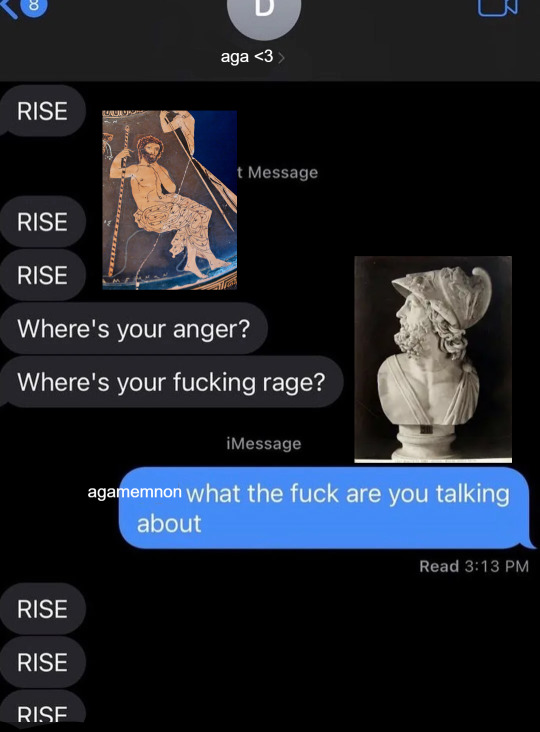
this happened homer told me himself
#tagamemnon#greek mythology#greek myths#the trojan war#trojan war#iliad#the iliad#epic cycle#agamemnon#menelaus#homer's iliad
541 notes
·
View notes
Text
Article about a VR-based approach to Oidheadh Chloinne Tuireann, using a combination of Ogham script, old maps of Ireland, quotations from the text in Irish and English, and surrealist imagery, as the user inhabits the reincarnated body of the antihero/villain protagonist Brian, who seeks to understand why he died in his last life.
I don't endorse some of the statements re: pre-Christian beliefs...or about medieval Irish literature...BUT the point is that I think that this is a really cool approach to medieval Irish lit/specifically the mythological cycle.
(This project is only available thanks to a collaboration between digital humanities and Celtic Studies, if you want to help support more initiatives like this, if you haven't, please sign the petition here to support the Celtic Languages and Cultures programme at the University of Utrecht, which faces the loss of its BA program.)
8 notes
·
View notes
Text

the judgment of paris :3
#ahhhhhh this took like five hours i think#broooo#yeah anyway#now i have deisgns for these gods heck yeahhh#greek mythology#greek myth art#homers iliad#epic cycle#ancient greece#the judgment of paris#paris#athena greek mythology#hera greek mythology#aphrodite greek mythology#the trojan war#my art#my doodles#epic the musical#yeah that’s abt it#hate the background btw it’s so ugly
523 notes
·
View notes
Text
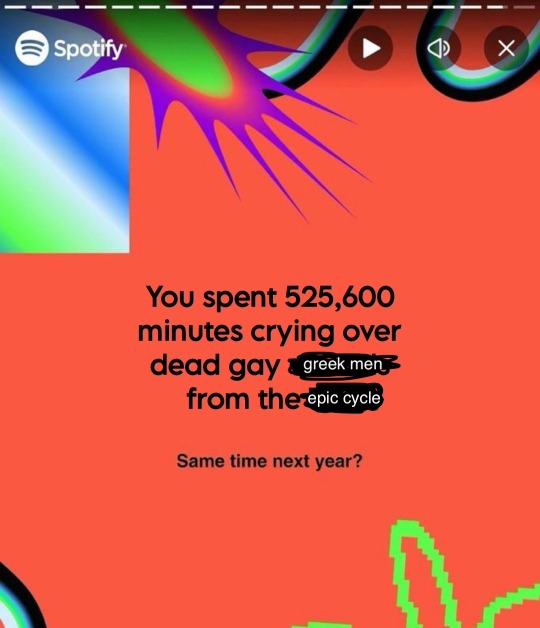
#og image from outromoony#ochi orates#patroclus#achilles#odysseus#diomedes#patrochilles#odydio#etc#greek mythology#tagamemnon#epic cycle
718 notes
·
View notes
Text




Suppliant my children's murderer to implore, And kiss those hands yet reeking with their gore
(2/2)
12K notes
·
View notes
Text
telemachus, neoptolemus, orestes, and peisistratus as a friend group. DO YOU SEE THE VISION?? SON OF ODYSSEUS, SON OF ACHILLES, SON OF AGAMEMNON, SON OF NESTOR??? DO YOU SEE IT????
#my posts#epic the musical#greek mythology#the iliad#the odyssey#the oresteia#the telegony#epic cycle#telemachus#peisistratus#orestes#neoptolemus#i know this isn't really viable canonicity wise BUT PLEASE I WANNA SEE SOME FANART OF THEM#I WANNA SEE THEM INTERACT
381 notes
·
View notes
Text

blue sargent (in lady macbeth’s robes) study of circe invidosa by john william waterhouse
#also blue is so circe magic witch energy#like she got the whole gangsey under her spell#this is the only way to subvert to crushing affects of art block#digital art#the raven cycle#trc#blue sargent fanart#blue sargent#gangsey#digital painting#study#circe#greek mythology#epic the musical#epic circe saga
797 notes
·
View notes